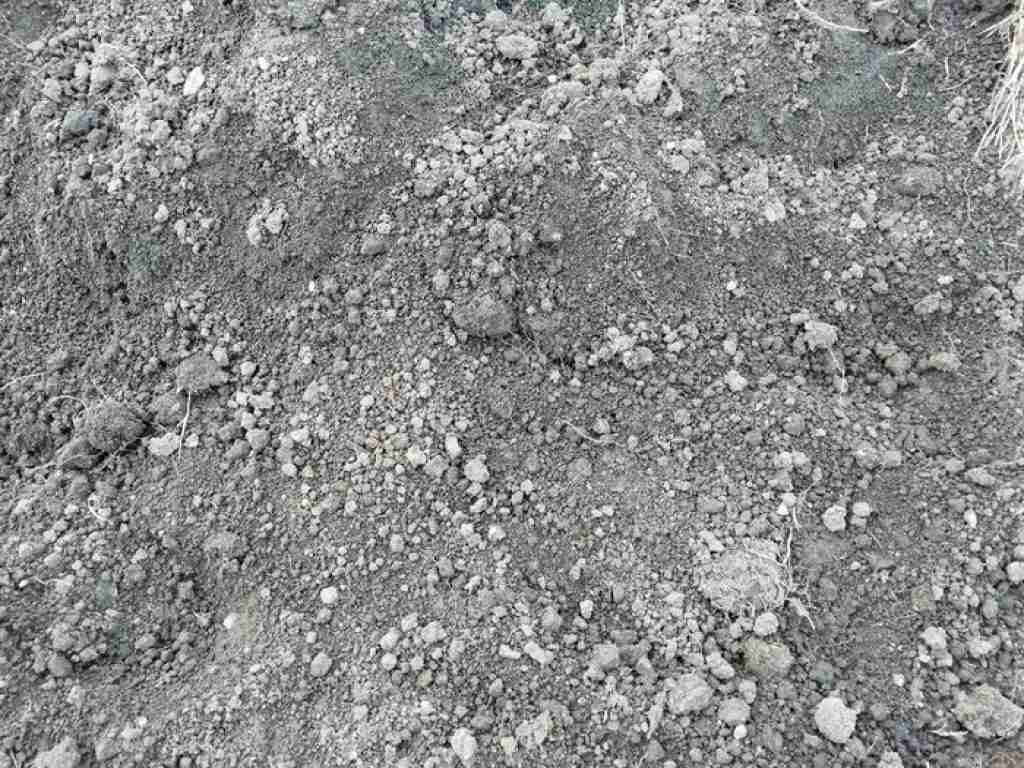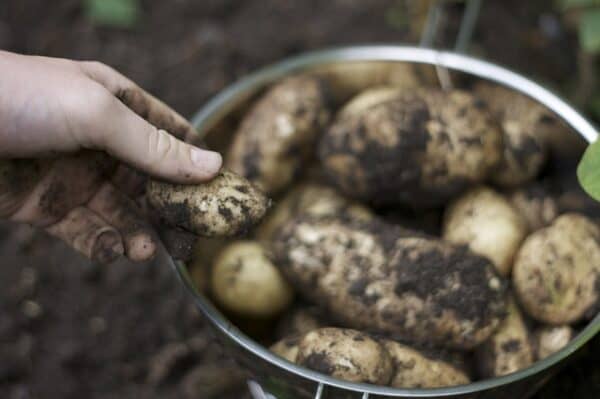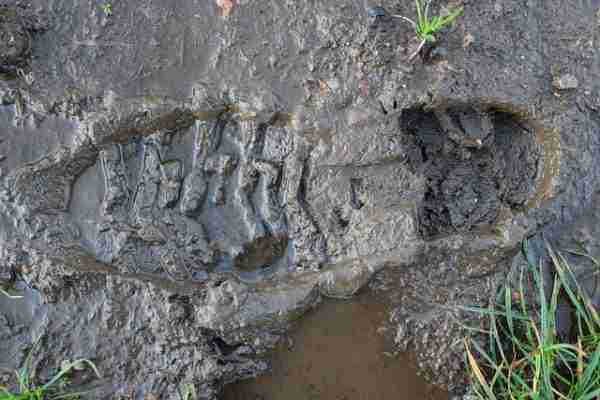As anyone can tell you, a solid foundation is the key to success – whatever the endeavour.
If you choose to build a house on a shoddy base of ragged stones and sand, you can’t possibly expect that home to stand as long as one built on a firm bed of well-drained cement. The same holds true in the garden: you can buy the best seeds, you can have a sealed, high-tech, state-of-the-art, climate-controlled greenhouse, and use all the best fertilizers, but if your soil is subpar, you may still find yourself at a disadvantage compared to the average backyard gardener with the right type of dirt for the job.
In order to choose – and maintain – the right soil for your plot, or to determine which vegetation will thrive in a certain soil, you should learn how soil is formed and the properties that make up the best combinations of soil for various gardening needs.
Soil formation, or pedogenesis, is caused by a series of changes that can be grouped into four broad types of process: additions, losses, transformations, and translocations.
Soil Additions
The most straightforward of the processes is addition, where soil can be formed or changed through the addition of material from outside sources; organic matter such as leaf litter, soluble minerals from groundwater, or even dust from the atmosphere will all add to the existing soil.
In fact, additions are a great way for gardeners to ensure that the soil in their planting beds has the proper pH balance and contains all the nutrients necessary for great plant growth.
Soil Losses
Oddly enough, the removal of material from the ground can also contribute somewhat to soil formation – minerals can leach into lower layers of soil through the movement of groundwater, or the surface of the soil can be eroded by wind or rain. This changes the composition of the soil at several layers, as the loss from one layer may be an addition to another layer.
Soil Transformations
Soil transformations occur when one type of soil constituent changes forms – organic matter such as compost or leaf litter can break down, changing the soil composition at the surface, or larger mineral particles near the base of the soil can be weathered and broken up as well, contributing to the soil substrate.
Soil Translocations
Translocation occurs when organic or inorganic matter passes from one soil layer to another, either up or down. This is typically caused by the movement of water, but other organisms like vegetation, ants, or earthworms can also contribute to the translocation of soil particles as they move through the top layers of soil. In some areas, translocations can occur as the soil freezes and thaws over the winter, causing movement in the soil layers or even within a single layer of soil.
What is a soil horizon?
If you dig down deep into a patch of soil you may notice that it is made up of several layers. This is especially visible on larger excavations – such as when digging foundations or septic systems. These different layers are called the soil horizons; they are mostly parallel to the soil surface. Each horizon can show a rather marked difference in colour and texture from those above and below them, though in many cases, the horizons blend together and are more difficult to distinguish.
The biological, chemical, and physical characteristics of each horizon layer is different from the others – and each soil can be composed of several different layers, though most have only three or four.
What classifications do soil horizons have?
There are several systems of soil classification; some are as simple as differentiation between “sandy soil” or “clay soil” – which is usually enough information for the average gardener. Soil scientists, who study how soils form, and which types occur where tend to use much more complex systems.
In most soil classification systems, the three major soil horizons are commonly referred to as the A horizon (topsoil), the B horizon (subsoil), and the C horizon (parent material).
There may also be an organic layer (the O horizon) or peat layer (the P horizon), an eluviated layer (the E horizon), and bedrock (the R horizon). Though some horizons aren’t clearly delineated and may have characteristics from two layers – we call these transitional horizons – we typically see the soil horizons form separate layers in the following descending order from the soil surface:
O Horizon – Organic or Peat Layer
This layer is comprised primarily of organic matter such as decomposing leaf litter. The thickness of the organic layer is variable from one soil to another; in some soils, it may not be present at all.
A peat layer is also formed from organic matter but is distinguished from the standard O horizon as it forms only under waterlogged conditions.
A Horizon – Topsoil Layer
The rich topsoil layer is mostly made up of minerals from parent matter with a bit of organic material (called humus) mixed in. This soil is usually darker than the layers beneath it and is a great material for plants and other living organisms – earthworms, insects, and fungi – to thrive in.
E Horizon – Eluviated Layer
This layer is most typically found in older soils or forested areas. It’s a layer of soil from which the clay, minerals, and organic matter have been leached away; therefore, it’s primarily comprised of sand and silt from resistant minerals like quartz.
B Horizon – Subsoil Layer
This layer is also very rich, due to the minerals that have leached down from the topsoil and eluviated horizons and accumulated in the subsoil. It’s commonly a reddish or brownish color due to the presence of iron oxides.
C Horizon – Parent Material
This is the substrate – the original layer at the surface of the earth from which the soil developed; it’s formed either from deposits such as landslides or flood deposits or by the weathering of bedrock beneath it. In areas where there is no bedrock, the C horizon can closely resemble the layers above it, which are collectively known as the solum – the soil horizons that can be affected by the soil formation processes.
D Horizon
Though not universally distinguished, some soil classifications (such as the Australian system) also include this designation. It’s used to refer to soil material below the solum that doesn’t share the solum’s general characteristics, but is not a C horizon and cannot be referred to as other horizon layer.
R Horizon – Bedrock
The R horizon is the bottom-most layer of the soil profile – and yet, it doesn’t contain any soil at all. Instead, it’s the layer of bedrock at the base of the soil profile; it can be partially weathered, or not weathered at all. This layer, unlike those above, is composed of a fairly solid mass of hard rock, so it cannot be excavated by hand.
L Horizon
This term is also not universally applied; it refers to mineral or organic material deposited in water – either by aquatic organisms or precipitation. This can include diatomaceous earth, marl, or sedimentary peat; the L horizon is typically a remnant from a past body of standing water.
What is a soil profile?
The way in which the different soil horizons are arranged in any given area is called the soil profile – this is one of the most important concepts in soil science. Taking a sample of the vertical section from the ground surface downwards to the underlying rock allows us to understand the processes involved in the formation of that soil and to identify the soil horizons.
The soil profile is like a diary of the landscape, telling us the story of its past.
In areas with immature soil or arid areas, the soil profile might only be ten centimeters thick; in most of the world’s temperate areas, the soil profile is around one meter deep, yet it can be several meters deep in tropical areas where the climate allows for rapid transformations in the soil.
How are soil profiles formed?
All soil profiles begin at the C horizon, with the parent material. Whether we’re looking at a bed of freshly-cooled lava, debris made up of rocks and soil left behind by a flooding river, or an area of underlying land that has been newly exposed by a receding glacier – though it’s not technically soil at the moment – we’re looking at what will one day become a soil profile.
Over time, the parent material will be altered and the individual soil horizons will begin to form. Its character and chemical composition will play an important role in determining the soil properties, though the parent material’s influence on the soil will decrease with time.
Which 5 factors affect the formation of soil?
There is a vast diversity of soils across the planet – a fact that is unsurprising given all the factors involved in soil formation. Though the parent material is the first determinant of the type of soil that will be formed, there are four other factors that will begin to influence the soil over time.
Climate
The climate exerts a high level of influence over soil formation as it affects both the vegetation and the activity level of the soil organisms. Energy and precipitation will strongly influence the chemical and physical reactions of the parent material and the rate at which additions from organic matter, transformations, translocations, and losses through the water system occur.
Organisms
The specific organisms – whether animal or vegetable – living in and around the soil will also affect its formation and composition, mainly through nutrient cycling, the process through which decomposing organisms return nutrients to the soil.
For example, the high level of bacterial activity in lush rainforests leads to the rapid decomposition of leaf litter, but the cold temperatures of the tundra severely limit bacterial activity, leading to a buildup of organic matter at the surface.
Vegetation can also affect the soil chemistry: in a temperate pine forest, decomposing pine needles cause the soil to be more acidic which prevents other plants from thriving and reduces the amount of organic matter on the forest floor; however, pine trees have a low demand for nutrients, which means that fewer soil nutrients are taken up unlike in areas with higher-demand vegetation like deciduous trees.
Relief
The topography of an area can greatly influence soil formation as it will determine the runoff of water, which contributes to erosion and mineral deposits.
A steep incline will cause larger accumulations of water as precipitation flows downhill; the higher velocities and volumes of water lead to a higher level of erosion, and therefore to a more weakly developed soil at the mid-level and bottom of the slope as it washes away the parent material.
The incline of a slope can also determine what type of deposits may be left there: larger particles, like sand, will drop out of the downward-moving water first, followed by finer, clay-sized particles. This means that coarse soil tends to be found near the base of a mountain whereas fine-textured soils will be located further away from the slope.
The geographical relief can also create microclimates where the moisture level and temperature are dissimilar to those typical of the region, which will impact the vegetation type that grows there in relation to the surrounding area, and which leads to changes in the soil formation.
Parent material
Young soils carry many of the characteristics of their parent materials, such as their color, texture, and structure as well as their chemical and mineral composition. For example, in regions formed largely of red sandstone, the soil is likely to be red.
Time
Time is truly one of the most important factors in soil formation, as the age of the soil dictates how long the other factors have had to exert their influence on the soil. Older, more mature soils show lots of evidence of the soil formation process; a vertical sample tends to provide very well-developed horizons, though in some cases, thousands of years of weathering and leaching can make the layers harder to distinguish with the naked eye.
Further reading:



